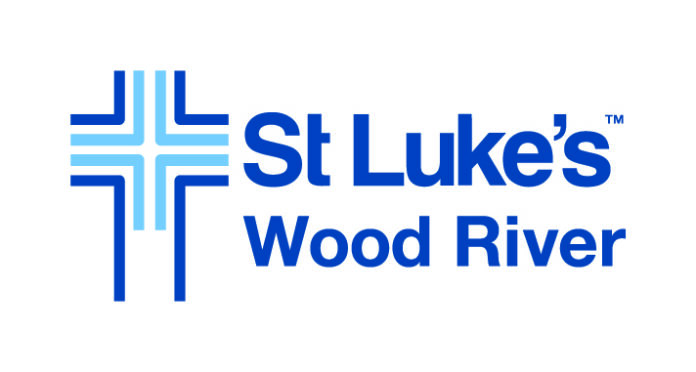St. Luke’s Children’s System medical director gives thoughts on the 2021-22 school year
By DR. KENNY BRAMWELL
As we look forward to a new school year, we must work together to keep Idaho schools open for in-person learning.
To ensure Idaho students and teachers stay in the classroom: get your COVID-19 vaccine, continue to follow the Centers for Disease Control and Prevention’s guidelines including wearing a mask and keeping your distance indoors, and do your part to bring Idaho’s COVID-19 positivity rates even lower. There are other important guidelines documented by the American Academy of Pediatrics.
Here are important thoughts to consider for this upcoming school year:
COVID-19 vaccines will greatly reduce
the risk of the virus spreading in schools.
COVID-19 vaccines are a critical part of ending the pandemic. High vaccination rates in the community and our schools may influence whether school districts are able to maintain full-time, in-person learning.
COVID-19 vaccines are proven to be safe and effective. Per Idaho Department of Health and Welfare, those testing positive for COVID, hospitalizations and death are overwhelmingly nearly 99%, occurring among those who are not vaccinated.
About 80% of teachers and staff have rolled up their sleeves to get their shot of prevention. Many middle schoolers and high schoolers will also likely be protected by fall, as students 12 and older have been able to get the Pfizer vaccine since May. The same vaccine is currently being studied in children as young as 2 and could soon be expanded to children 6 months to 2 years old. The company expects to apply for an FDA EUA [Emergency Use Authorization] for kids 2 to 11 in September, depending on the results of their trials.
Students learn best in the classroom.
The resilience of students, staff, and families this year is a testament to our education community’s ability to face challenges and come together. Idaho schools rose to the challenge to keep our children engaged in learning last year through a combination of remote and hybrid learning models.
However, educators increasingly worry the time outside brick-and-mortar schools has caused students to fall behind in academics and social-emotional skills. A collection of studies says students “made little or no progress while learning from home.”
The importance of in-person learning is well-documented. Students interact with peers and tend to be more alert and engaged rather than losing motivation and self-discipline. Teachers can build relationships with students, better evaluate strengths, and mentor students that need support.
School is a refuge for vulnerable children.
Schools are safe places where caring adults provide healthy meals to hungry kids or give clothing and toiletries to children experiencing homelessness. Students with special needs receive physical, occupational and speech-language therapy. These wrap-around services are part of the additional services that schools provide.
When school campuses close, children suffer. The financial and emotional stress of COVID-19 is believed to be triggering a sharp uptick in child abuse and child deaths in some communities, but a reduction in reports to law enforcement. Injuries to children go undetected, in part because kids aren’t directly in front of teachers who are often the first to recognize signs of abuse.
The pandemic exacerbated the growing children’s mental health crisis.
Imagine for a moment you are a child during this pandemic. You’re scared about the virus, worried Mom and Dad might get sick, maybe grieving the loss of a beloved grandparent who died from COVID-19, you can’t play with friends like you used to, or go to your favorite places like before. Everything predictable and familiar vanished instantly and it’s taking a toll on your mental well-being.
Young people are suffering just off-webcam. Many are isolated, stressed, anxious, and pleading to come back to campus.
Breaks in continuity of learning, changes in routines, missed healthcare visits, missed significant life events, lost security and safety due to housing and food insecurities, and increased exposure to violence and online harms are reasons the CDC says COVID-19 could have long-term negative impacts on children.
We need to ease the burden for stressed-out families.
Parents and guardians were thrown into this chaotic, shut-down world without warning or preparation. For more than a year, moms and dads have not only worried about protecting their children from a deadly virus, but also struggled to fill gaps in learning and childcare, while trying to maintain jobs and support families.
Some parents were forced to make the difficult choice to quit working and supervise their children’s remote learning. Disproportionately, they are women. The Kaiser Family Foundation found 10 percent of working mothers with kids in school left jobs due to COVID. Half blamed school closures. Women of color and those making lower wages were almost twice as likely to have left a job. Lost or reduced earnings only exacerbate existing gender and racial disparities.
For all of these reasons, we need to work together to support families and our communities.
Like many parents, I am looking forward to this school year. If we really want to move safely back into schools, vaccinations are essential, along with following other infection prevention behaviors—like wearing a mask and social distancing when indoors. We can do this together.
This is the way.
Dr. Kenny Bramwell is the System Medical Director for St. Luke’s Children’s System and an emergency physician.
It’s your life, We help you live it



